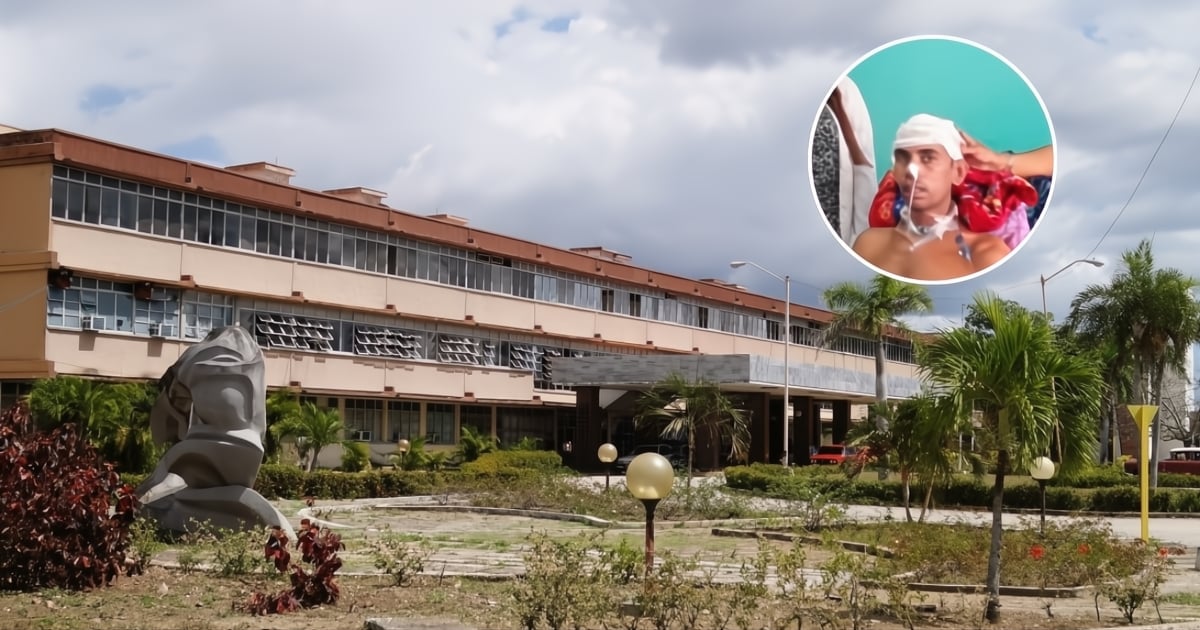A 35-year-old man, Ardenis Pérez Sablón, has made a remarkable recovery after suffering from a severe traumatic brain injury and spending nearly three weeks in the Intensive Care Unit at the "Lucía Iñiguez Landín" Clinical Surgical Hospital in Holguín.
The hospital revealed on social media that Pérez was admitted with multiple skull fractures, subarachnoid hemorrhage, cerebral contusions, and severe brain edema, all caused by several blunt force impacts to the head. Given the critical nature of his condition, a decompressive craniotomy was performed to evacuate hemorrhagic areas and alleviate intracranial pressure. These procedures were particularly challenging due to the severe shortage of medications and supplies the hospital faces.
Following the surgery, Pérez experienced multi-organ failure, including cardiac, respiratory, and neurological dysfunctions. He also developed a respiratory infection linked to mechanical ventilation, further complicating his situation. According to the hospital's report, multiple antimicrobials were administered, surgical washouts were conducted, and antibiotics were given intrathecally via a spinal catheter placed in the dorsal spine.
Despite the dire prognosis, Pérez began showing signs of improvement within 48 hours of intensive treatment. His renal function stabilized, and he responded positively to vasopressor support to maintain blood pressure. Four days later, the need for medications to control brain swelling and central nervous system infection decreased significantly. His condition continued to improve, allowing for the eventual removal of mechanical ventilation.
On February 25, Pérez Sablón was moved to the neurosurgery ward, showing progressive recovery of consciousness and the ability to follow simple commands. He remains under medical observation as he regains mobility and muscle strength.
This case was highlighted on the official page of the "Lucía Iñiguez Landín" Clinical Surgical Hospital as a significant achievement, yet it underscores the serious challenges the Cuban healthcare system faces in treating critically ill patients amid a severe crisis of supplies and medications, a reality that continues to endanger lives.
The hospital emphasized, "Stories like these demonstrate the true resilience of healthcare professionals in Cuba." However, this success story starkly contrasts with many others where, despite the medical staff's immense efforts to save lives, inadequate working conditions and lack of essential resources often lead to tragic outcomes.
The Cuban public has been closely following the story of Geobel Damir Ortiz Ramírez, a child whose fragile health condition has kept him in the intensive care unit at the Institute of Hematology. Damir's situation worsened with a diagnosis of acute leukemia, complicating his already precarious health.
In February, the U.S. Embassy in Cuba announced it would continue the process to grant a humanitarian visa to the Cuban child Damir.
Understanding Healthcare Challenges in Cuba
What were the main challenges faced by the hospital in treating Pérez Sablón?
The hospital faced severe shortages of medications and medical supplies, which complicated the treatment and recovery of Pérez Sablón.
How did Ardenis Pérez Sablón's condition improve after initial treatment?
Pérez Sablón's condition began to improve 48 hours after intensive treatment, with stabilization of renal function and a positive response to vasopressors, leading to reduced reliance on medications for brain swelling and infection control.
What support did the U.S. Embassy offer to Geobel Damir Ortiz Ramírez?
The U.S. Embassy in Cuba announced it would continue the process to provide a humanitarian visa to Geobel Damir Ortiz Ramírez, who is battling acute leukemia.
